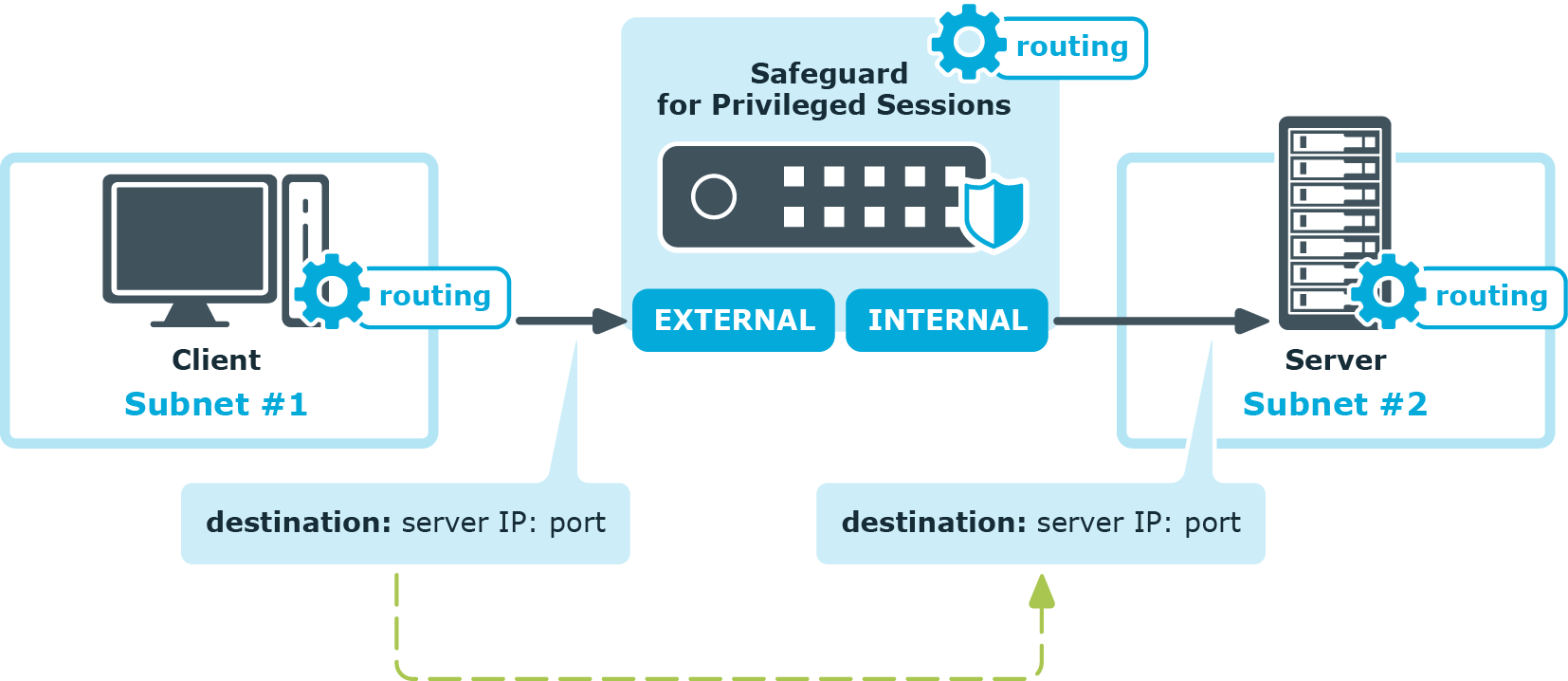Transparent mode
In transparent mode, One Identity Safeguard for Privileged Sessions (SPS) acts as a transparent router connecting the network segment of the administrators to the segment of the protected servers at the network layer (Layer 3 in the OSI model). All connections must pass through SPS to reach the servers — SPS is a proxy gateway, completely separating the protected servers from the rest of the network. Controlled connections and traffic are inspected on the application level, while other types of connections are simply forwarded on the packet level.
SPS can also be configured to act as a single-interface transparent router. For details, see Single-interface transparent mode.
|
|
Caution:
Transparent mode does not support multicast traffic. |
Figure 8: SPS in transparent mode


